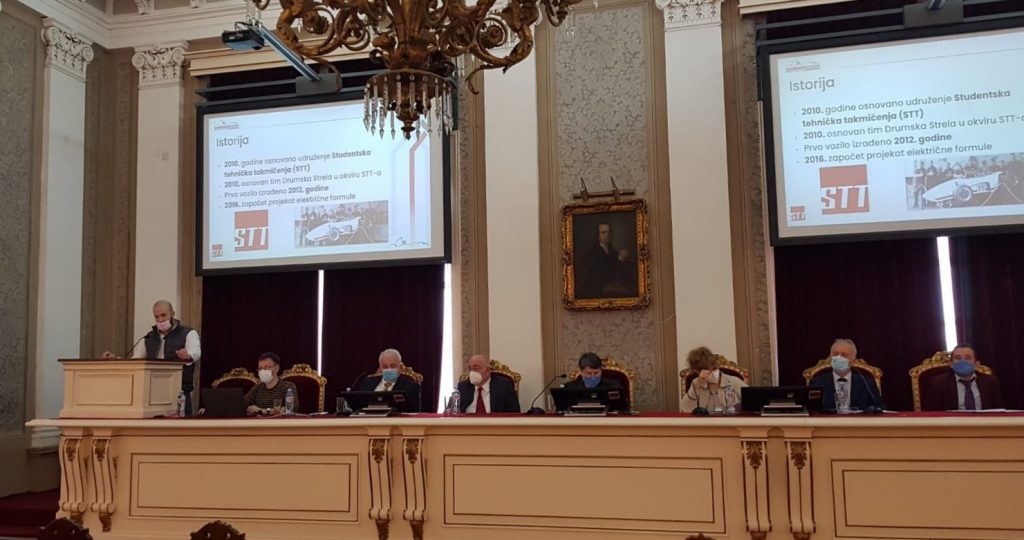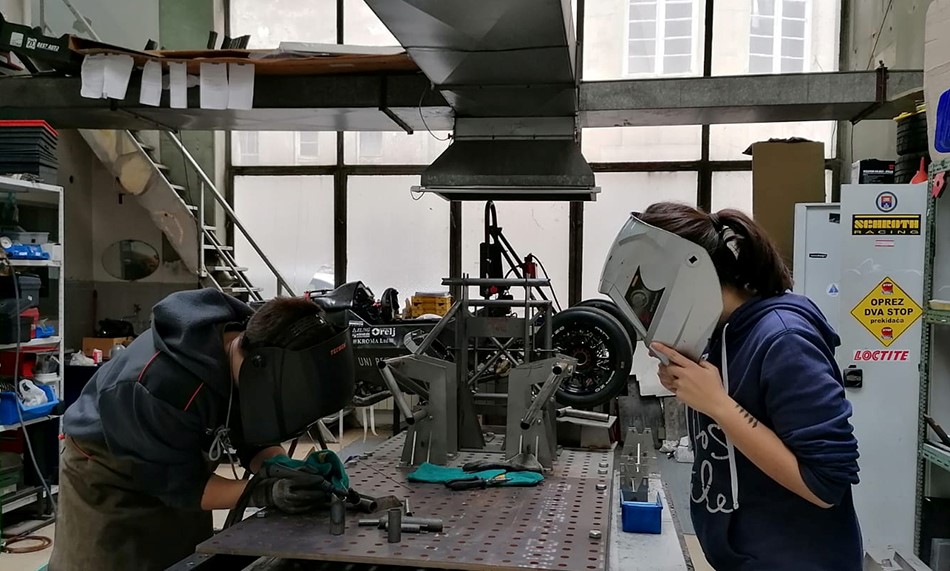The Covid-19 pandemic delayed last year’s competitions, but it did not discourage us from dedicating ourselves to new challenges. Currently, we are working on two projects for the 2021 season. The first one is the team’s first electric formula in history, and the other is the ninth racing car with an internal combustion engine.
The fact that “Road Arrow” team has over 100 students from eight faculties of the University of Belgrade participating in this season speaks volumes about the magnitude of the challenge. Besides students from the Faculty of Mechanical Engineering, the projects also involve their colleagues from the Faculty of Technology and Metallurgy, Faculty of Electrical Engineering, Faculty of Economics, Faculty of Architecture, Faculty of Law, Faculty of Organizational Sciences, and the Military Academy.
In early January, the team completed the design and planning of all subsystems. The performance of the internal combustion engine-powered vehicle was significantly improved through the application of the most innovative design and technological solutions.
Regarding the chassis and suspension, not only the brake disc was modified, but also the brake pedal’s kinematics was changed, and the gas pedal travel was reduced. Modifications were made to the exhaust subsystem and engine cooling system.
The aerodynamics and design team is currently working on handcrafting medium-foam molds for the front and rear C-wings of the vehicle, as well as optimizing other complex aero package components. Once the aero package is complete, testing on the track will follow.
We are also actively preparing for the static disciplines. Reports are being prepared, and analyses and simulations are conducted. Structural and thermodynamic analysis software packages, as well as software for testing vehicle dynamics and kinematics, are used as tools. Simultaneously, the team is working on a detailed plan for testing the vehicle on the track.
As for the electric formula, the focus is on uncompromising vehicle reliability and safety. “We have applied a series of sophisticated and innovative solutions, and the main innovation is the monocoque chassis, which will significantly contribute to the vehicle’s aerodynamic and dynamic performance,” says Bogdan, the team leader.

The vehicle’s dynamics are further improved by the all-wheel-drive system, allowing independent control of each wheel individually, housed in a 10-inch rim. The vehicle will be powered by lithium-polymer batteries, theoretically enabling the electric formula to reach a speed of 100 km/h in 2.5 seconds.
In recent months, the electronics team, responsible for hardware, worked on designing and producing printed circuit boards (PCBs) to be used in the electric formula. Special attention was given to the vehicle’s safety circuit. The software team is working on developing applications for data acquisition and processing, wirelessly obtained from the vehicle in real-time.
This year, the team has qualified their electric vehicle for three competitions in Italy, Hungary, and Croatia. The internal combustion engine-powered vehicle will have the opportunity to prove itself on tracks in Hungary, Italy, Croatia, and Austria.
We are very grateful to ZF Srbija, the main sponsor of this project. Also, without the selfless support and cooperation of companies like Tenfore, Slovas, Energize, Emil Frey Mercedes-Benz, D Express, 3D Republike, Bosch, RoTech, CIAH, and many others, this project could not have been realized.

The Formula Student team “Road Arrow” also receives great support from the University of Belgrade. Over the years, the university has been understanding of our ideas and projects. Recently, we had the opportunity to present this year’s project to the members of the University Senate. We will do our best to justify the trust placed in us and proudly represent the University of Belgrade at the upcoming competitions.
